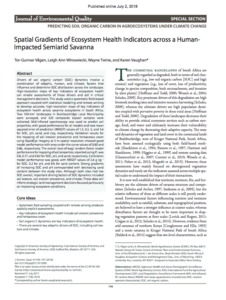Increasing demand for food and the shortage of arable land call for sustainable intensification of farming, especially in Sub-Saharan Africa where food insecurity is still a major concern. Kenya needs to intensify its dairy production to meet the increasing demand for milk. At the same time, the country has set national climate mitigation targets and has to implement land use practices that reduce greenhouse gas (GHG) emissions from both agriculture and forests. This study analysed for the first time the drivers of forest disturbance and their relationship with dairy intensification across the largest montane forest of Kenya. To achieve this, a forest disturbance detection approach was applied by using Landsat time series and empirical data from forest disturbance surveys. Farm indicators and farm types derived from a household survey were used to test the effects of dairy intensification on forest disturbance for different farm neighbourhood sizes (r = 2-5 km). About 18% of the forest area was disturbed over the period 2010-2016. Livestock grazing and firewood extraction were the dominant drivers of forest disturbance at 75% of the forest disturbance spots sampled. Higher on-farm cattle stocking rates and firewood collection were associated with 1-10% increased risk of forest disturbance across farm neighbourhood sizes. In contrast, higher milk yields, increased supplementation with concentrated feeds and more farm area allocated to fodder production were associated with 1-7 % reduced risk of forest disturbance across farm neighbourhood sizes. More intensified farms had a significantly lower impact on forest disturbance than small and resource-poor farms, and large and inefficient farms. Our results show that intensification of smallholder dairy farming leads to both farm efficiency gains and reduced forest disturbance. These results can inform agriculture and forest mitigation policies which target options to reduce GHG emission intensities and the risk of carbon leakage.
Authors:
Brandt, P.; Hamunyela, E.; Herold, M.; de Bruin, S.; Verbesselt, J.; Rufino, M.C.
Year:
2018

